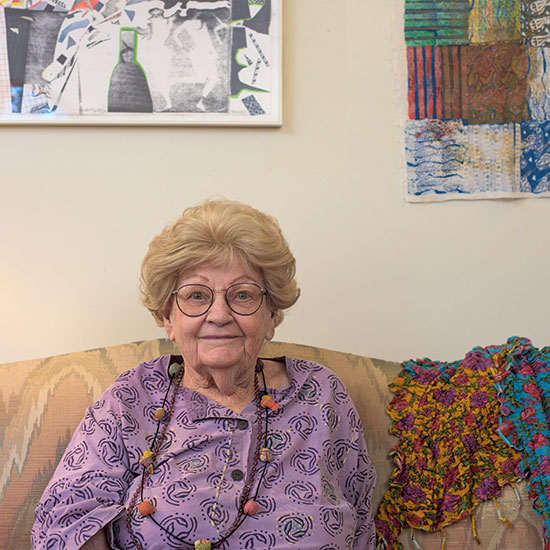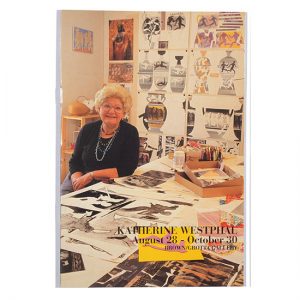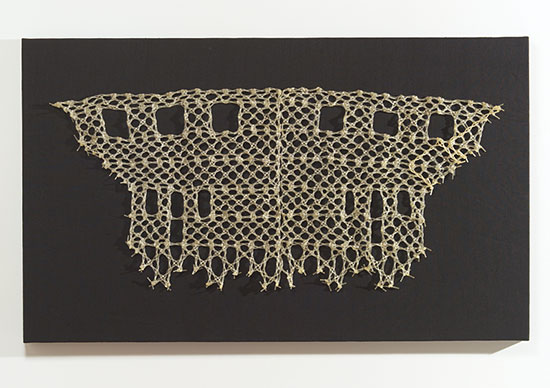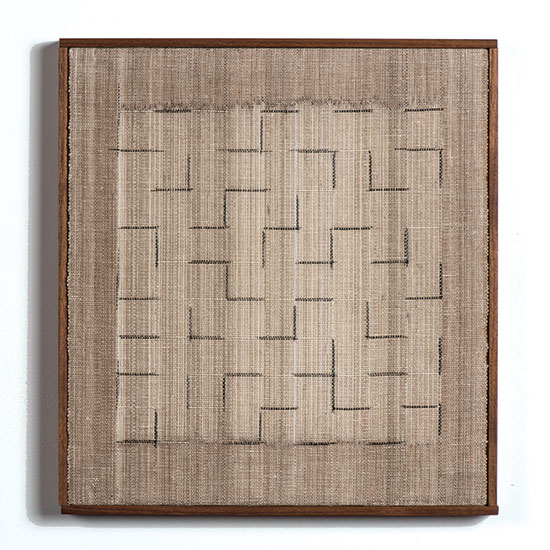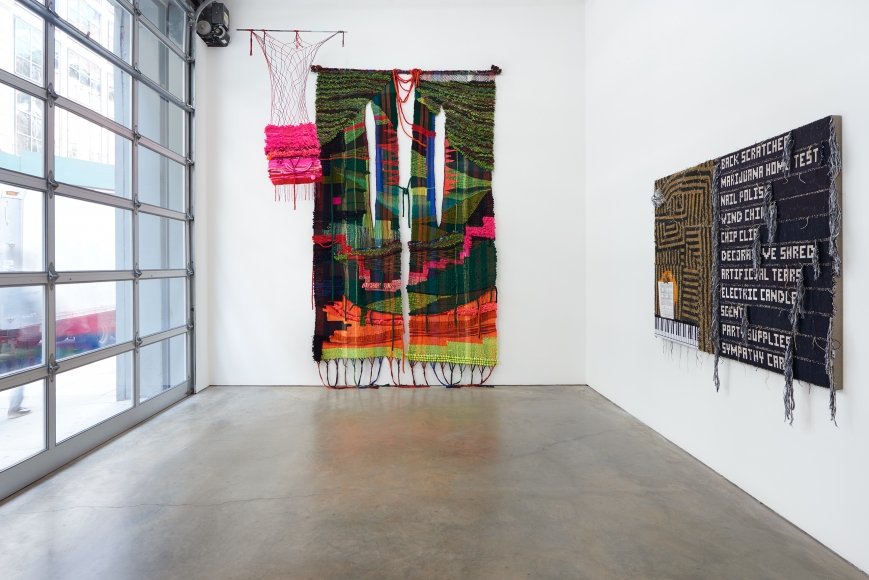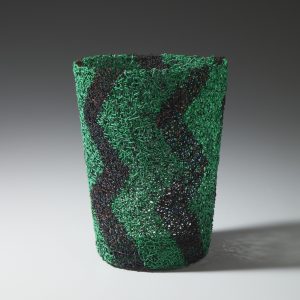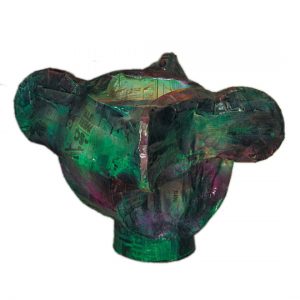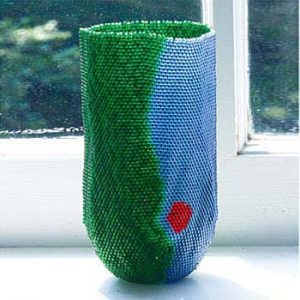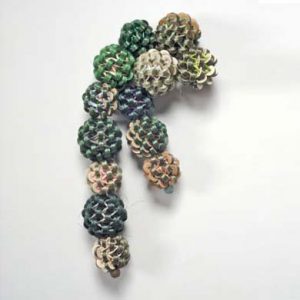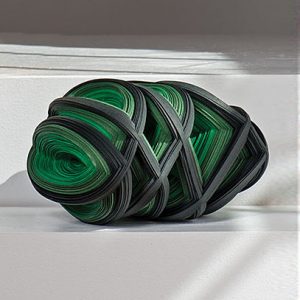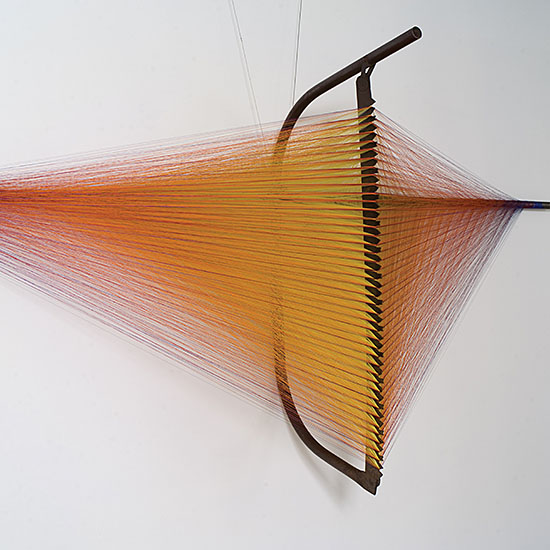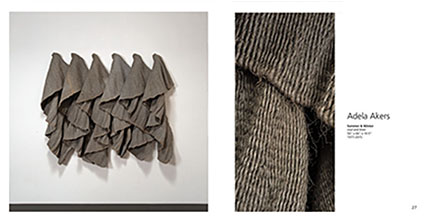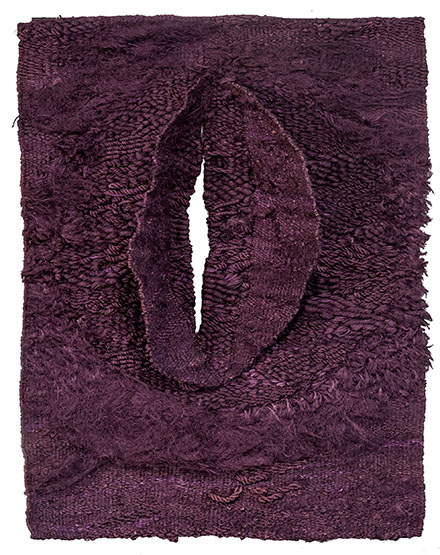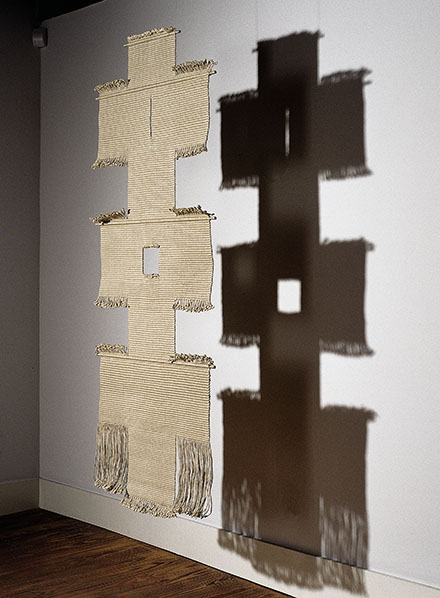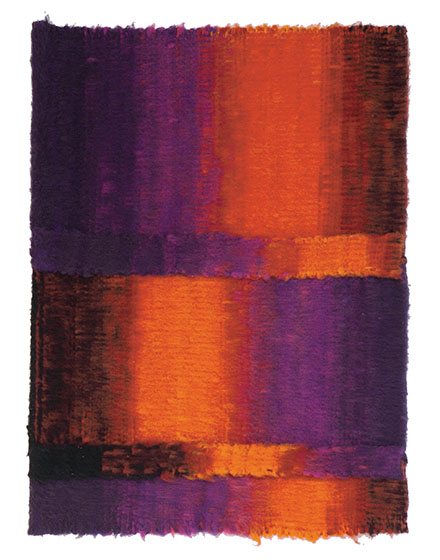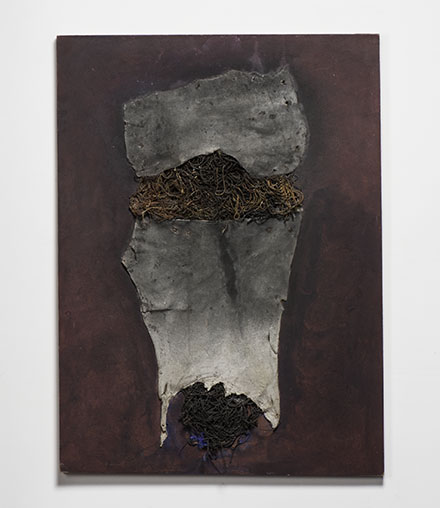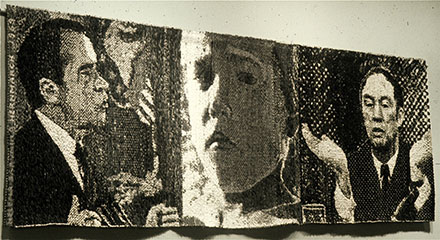We lost two fine artists and friends this month when Ethel Stein passed away at 100 and Katherine Westphal died at home in Berkeley, California at 99.
Six years later, Ethel’s work received the wider recognition it deserved. We were thrilled to attend the opening of her one-person exhibition, Ethel Stein, Master Weaver, at the Art Institute of Chicago in 2014. “Ethel Stein is an artist who only now, at the age of 96, is beginning to get the recognition she deserves from the broader public,” the Institute wrote. “Stein’s great contribution to weaving is her unique combination of refined traditional weaving techniques, possible only on a drawloom and used by few contemporary weavers, with modernist sensibilities influenced by Josef Albers, who trained in the German Bauhaus with its emphasis on simplicity, order, functionality, and modesty.” There were photos of her at work, a video and a dinner after with family members and supporters of the museum and crowds of visitors to the exhibition — a well-deserved tribute.
These artists and their lengthy careers, raise the question, is fiber art a key to longevity? Ethel Stein continued to weave even after she was discovered and lauded at 96. When we visited Katherine Westphal in Berkeley in 2015 we found her still drawing or painting every day in a series of journals she kept, something she continued to do until just a few weeks before her death. Lenore Tawney died at 100, Ruth Asawa and Magdalena Abakanowicz each at 87. Helena Hernmarck tells us that she knows several fiber artists who are 100. So those of you who are practitioners — keep it up!

